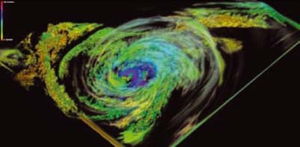Information
- Publication Type: Journal Paper (without talk)
- Workgroup(s)/Project(s): not specified
- Date: 2009
- ISSN: 0167-7055
- Journal: Computer Graphics Forum
- Number: 6
- Volume: 28
- Pages: 1670 – 1690
Abstract
In this state-of-the-art report we discuss relevant research works related to the visualization of complex, multivariate data. We discuss how different techniques take effect at specific stages of the visualization pipeline and how they apply to multi-variate data sets being composed of scalars, vectors and tensors. We also provide a categorization of these techniques with the aim for a better overview of related approaches. Based on this classification we highlight combinable and hybrid approaches and focus on techniques that potentially lead towards new directions in visualization research. In the second part of this paper we take a look at recent techniques that are useful for the visualization of complex data sets either because they are general purpose or because they can be adapted to specific problems.Additional Files and Images
Weblinks
No further information available.BibTeX
@article{fuchs-vom-2009,
title = "Visualization of Multi-variate Scientific Data",
author = "Raphael Fuchs and Helwig Hauser",
year = "2009",
abstract = "In this state-of-the-art report we discuss relevant research
works related to the visualization of complex, multivariate
data. We discuss how different techniques take effect at
specific stages of the visualization pipeline and how they
apply to multi-variate data sets being composed of scalars,
vectors and tensors. We also provide a categorization of
these techniques with the aim for a better overview of
related approaches. Based on this classification we
highlight combinable and hybrid approaches and focus on
techniques that potentially lead towards new directions in
visualization research. In the second part of this paper we
take a look at recent techniques that are useful for the
visualization of complex data sets either because they are
general purpose or because they can be adapted to specific
problems.",
issn = "0167-7055",
journal = "Computer Graphics Forum",
number = "6",
volume = "28",
pages = "1670--1690",
URL = "https://www.cg.tuwien.ac.at/research/publications/2009/fuchs-vom-2009/",
}


 image
image paper
paper
